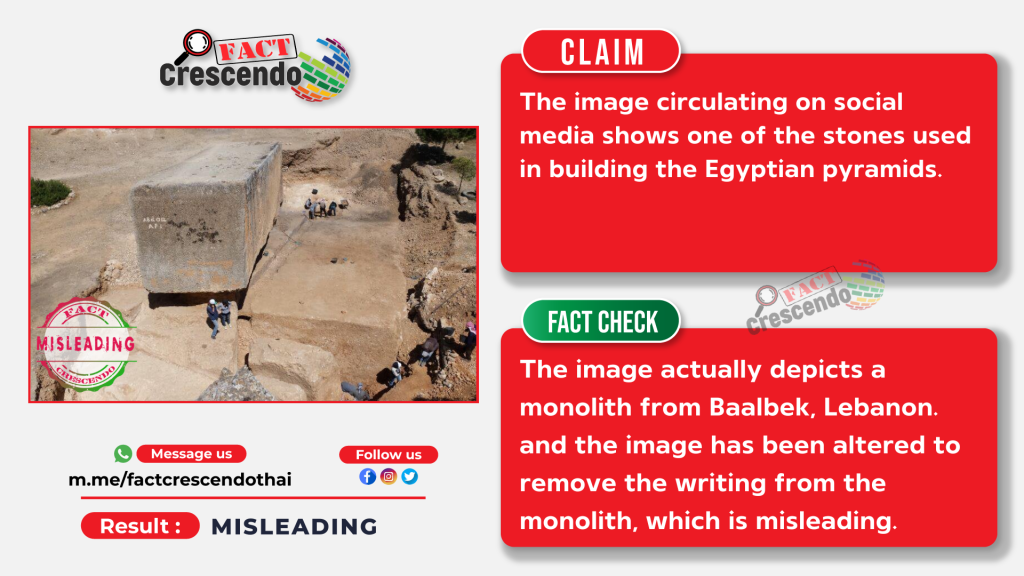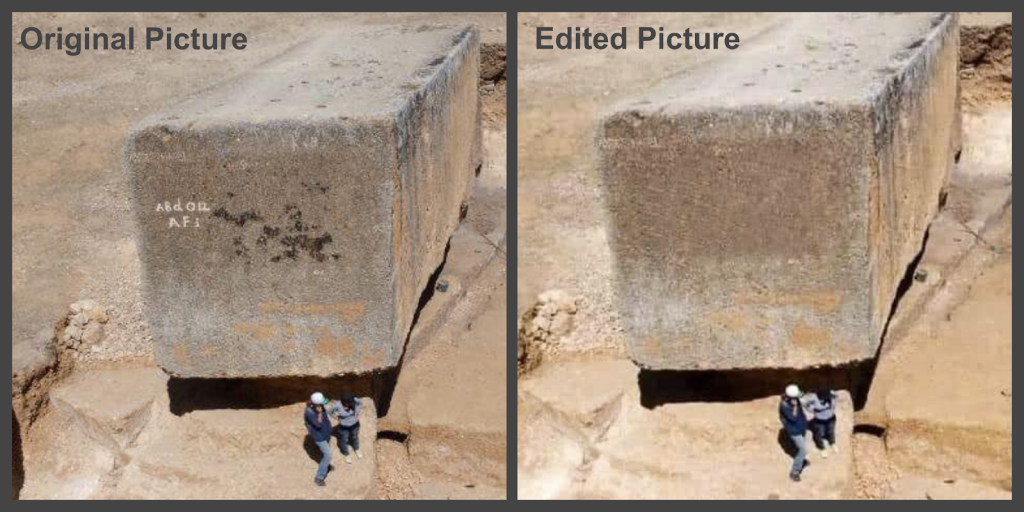
The Egyptian pyramids are one of the most iconic structures in human history. Their construction is shrouded in mystery and wonder. However, in the age of social media, misinformation about the pyramids has become increasingly prevalent. From conspiracy theories to fake news, the internet is rife with false claims about the pyramids and their construction. One recent example is an image circulating on several social media platforms, claiming to show a massive stone used in building the Egyptian pyramids.
Social Media Claim
In the past week, a Facebook user posted a picture of a large stone cube in the Facebook group called “Weird, Fantastic and Odd Things.” The user claimed that:
“This is one of the 2 million and 300 thousand stones (each weighing about 2.5 to 15 tons, or sometimes more) that were cut, dragged, and lifted to build the Great Pyramid almost 5,000 years ago.”

The post gained a lot of momentum, with over 1.8K shares and nearly a thousand comments.
Apart from this post, we found that this claim has been circulating since 2022.

However, upon closer inspection, we discovered that this image does not show a stone from the Great Pyramid, as claimed.
Fact-Checking
We started our investigation by using the Reverse Image Search feature to trace the origin of this photo. Then we discovered that the image was from the ancient city of Baalbek, which is located in modern-day Lebanon, according to the article published on Smithsonian Magazine’s website in 2014.

The article reports on discovering a massive stone block at a quarry in Baalbek, Lebanon. Weighing an estimated 1,200 tons, the block is believed to be one of the largest man-made stones ever quarried. The discovery sheds new light on the technology and capabilities of ancient societies. It offers insights into how they were able to create such massive structures as the nearby ruins of Baalbek. Moreover, we also found articles about this monolith here and here.
Here is a closer look at the historical stone. (Source: Brien Foerster)
The Baalbek monolith is not related to the Egyptian pyramids, which were constructed thousands of years earlier in ancient Egypt. The Egyptian pyramids were built using large blocks of limestone and granite quarried from nearby sources and transported to the pyramid construction sites. Additionally, we found that the picture was altered to erase the text on the monolith, suggesting that the photo may have been purposely changed to deceive others.

Moreover, according to Hemeda and Sonbol’s study of the Giza Pyramid in 2020, Pharaoh Cheops, also known as Khufu, began building the Pyramid of Giza around 2550 BC. This pyramid is the largest in Giza and stands at about 481 ft. (147 m) tall. It is made up of roughly 2.3 million stone blocks that weigh between 2.5 to 15 tons. The builders used stones of different sizes and heights for each layer. The lower layers of Khufu’s pyramid had very large stone blocks (1.0 m x 2.5 m base dimensions and 1.0-1.5 m high, weighing 6.5-10 tons), while the higher layers used smaller blocks (1.0 m x 1.0 m x 0.5 m, weighing around 1.3 tons) which were easier to transport.
Here is a picture of the stones of the Pyramid of Giza, compared to a human for scale.

Conclusion
In conclusion, the claim that the image circulating on social media shows one of the stones used in building the Egyptian pyramids is false. The photo actually depicts a monolith from Baalbek, and the image has been modified to remove the writing from the monolith, which is misleading.

Title:Debunking the Viral Image of the Massive “Egyptian Pyramid” Stone
Fact Check By: Cielito WangResult: Misleading




